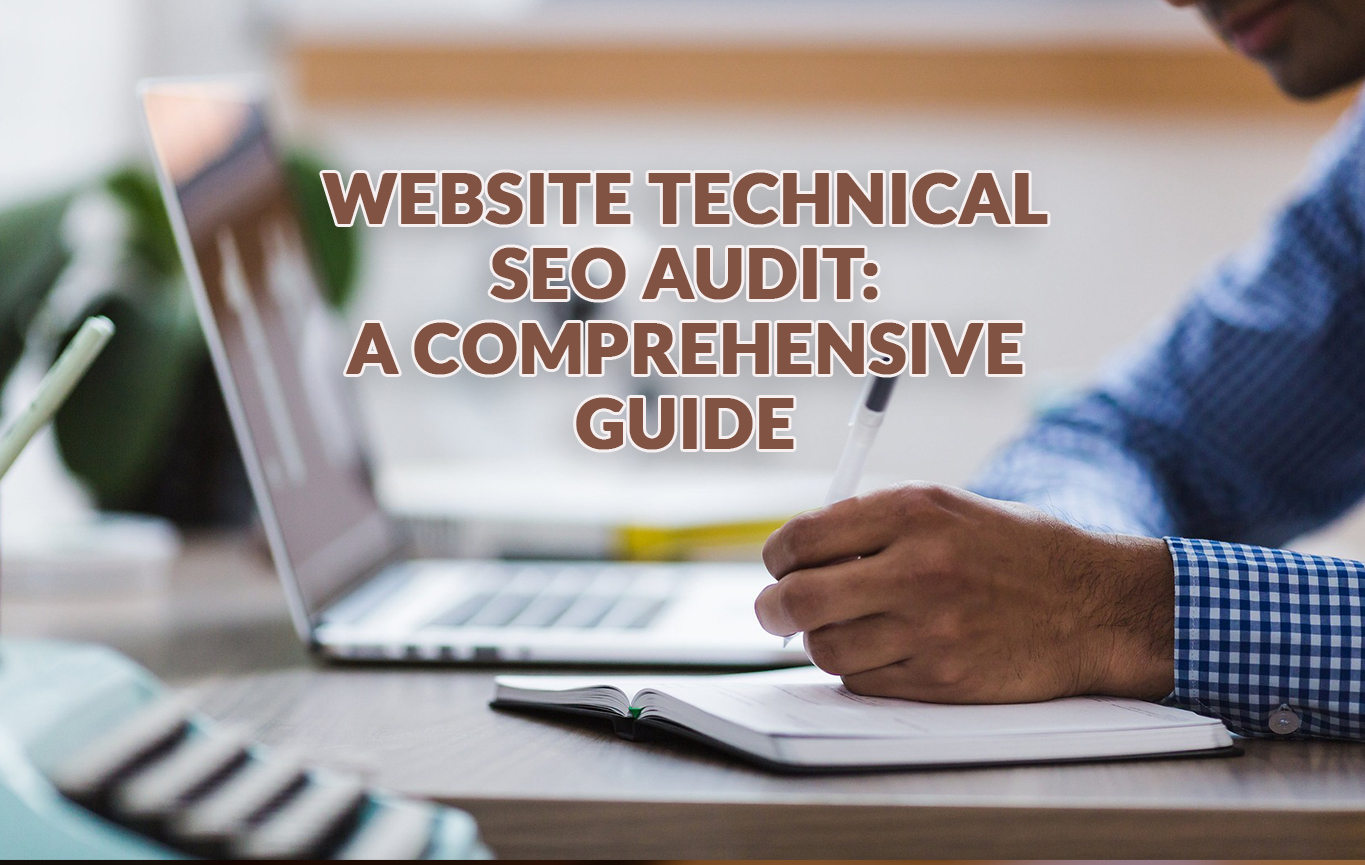In the ever-evolving digital landscape, how does one ensure that a website remains relevant and easily discoverable by search engines? The answer lies in conducting regular technical SEO audits. These comprehensive assessments are designed to analyze the technical aspects of a site and optimize its performance for search engines such as Google, Bing, and Yahoo. By identifying and addressing potential issues hindering a website’s visibility and user experience, it is possible to significantly improve online traffic and maintain high rankings.
The importance of a technical SEO audit cannot be overstated, as it provides critical insights into various aspects of a site’s architecture, internal linking structure, mobile-friendliness, among others. This article delves deep into the methodologies involved in performing an effective audit using tools like Google Search Console, Google Analytics, and Ahrefs’ Site Audit. By examining on-page factors such as content optimization and keyword usage alongside off-page elements like backlinks and social media presence; this guide presents an analytical yet methodical approach to assessing overall website health. With this knowledge at hand, readers will be equipped with the necessary information to master their website’s technical SEO efforts ensuring optimal performance in today’s competitive digital space.
Enhance your Website’s Traffic and SEO Performance with Technical Strategies: Site Audit, Internal Linking, Avoiding Duplicate Content, Enhancing User Experience, and Addressing Technical Factors for Better Ranking and Indexing
Implementing advanced technical strategies can significantly enhance your site’s traffic by optimizing its performance, accessibility, and visibility in search engine results. A well-structured website with minimal technical issues increases the likelihood of being indexed and ranked higher by Google algorithms, leading to increased organic traffic. To fully capitalize on the potential benefits of technical SEO, it is crucial to identify and address any existing crawl errors or other technical problems that may be inhibiting optimal search engine optimization.
One essential element in boosting website traffic through technical SEO strategies is improving site architecture. An organized and logical site hierarchy ensures that both users and search engine bots can easily navigate through the website’s content without encountering broken links or orphaned pages. Moreover, a clear URL structure that mirrors the site’s architecture contributes to better indexing and ranking by providing search engines with relevant information about each page’s content.
Another critical factor in driving more website traffic using technical SEO is addressing duplicate content issues, which can result in confusion for both users and search engines alike. Resolving these issues involves implementing canonical tags to designate a single authoritative version of a page while avoiding unnecessary URL parameters that might lead to further duplication. Furthermore, ensuring mobile-friendliness has become increasingly important as over half of web traffic occurs on mobile devices; therefore, prioritizing responsive design should be an integral part of any strategic plan for increasing website visitors.
Lastly, monitoring your website’s speed is crucial as it directly impacts user experience and serves as a significant ranking factor for Google. By utilizing tools such as Google PageSpeed Insights or Semrush Site Audit, you can identify areas where improvements are necessary for faster loading times and overall better performance. As you address these aspects within your technical SEO strategy, you will lay the groundwork for enhanced online visibility while resolving underlying issues hindering your site’s growth potential — paving the way towards effective implementation of “Technical SEO Audit – The Basic.”
Basic Technical SEO Audit Checklist – Ensuring Efficient Site Crawling
Technical SEO is crucial for a website’s success as it ensures optimal crawlability, indexation, and overall performance. Utilizing tools such as website audits and crawlers enables the identification of potential issues while providing valuable insights on website speed optimization and structured data implementation. By incorporating strategies such as Schema markup, webmasters can effectively enhance the user experience while ensuring search engine visibility, paving the way for increased website traffic and long-term success.
Why is Technical SEO Crucial for Your Website’s Success?
Ensuring optimal on-page factors and addressing potential issues in a site’s architecture are critical for enhancing search engine performance and overall user experience. Crawlability, indexation, site architecture optimization, and avoiding common technical SEO mistakes are essential components of a successful website strategy. By focusing on these elements, website owners can improve their online presence and increase the chances of attracting more organic traffic.
The importance of crawlability cannot be overstated; it allows search engines to access and understand the content on a site effectively. Indexation issues should be identified and resolved promptly to ensure that search engines can easily find all relevant pages. Technical SEO tools play an indispensable role in identifying problems with crawlability or indexation while providing actionable solutions. Site architecture optimization ensures that users can quickly navigate through the site without getting lost or frustrated, which could lead them to leave prematurely. Some common technical SEO mistakes to avoid include broken links, duplicate content, poor mobile-friendliness, slow page load times, and inadequate security measures.
- Importance of crawlability
- Indexation issues and solutions
- Technical SEO tools
- Site architecture optimization
- Common technical SEO mistakes to avoid
With these crucial aspects in mind, we will now delve into the various tools available for conducting efficient technical SEO audits and understanding how website crawlers work as part of an effective long-term strategy for optimizing your website’s performance.
Tool for Technical SEO: Website Audit and Crawler
Comprehensively conducting a meticulous examination of your site’s architecture and performance becomes significantly simpler with the utilization of specialized tools designed for thorough assessments, such as website audit software and crawlers. These instruments, including site audits and crawl-based tools, are integral to identifying potential obstacles that may impede website performance, in addition to facilitating the process of discovering technical issues that require prompt resolution. Employing these state-of-the-art resources not only simplifies the complex task of analyzing vast amounts of data but also empowers webmasters with actionable insights for fixing errors and optimizing their sites.
A profound understanding of crawlability and indexation is vital in improving search engine rankings and overall user experience. By leveraging reliable tools like Google Search Console alongside sophisticated website crawlers, webmasters can gain valuable insights into how search engines interact with their sites while also addressing any underlying issues that may hinder optimal functionality. This comprehensive approach ensures a seamless transition into subsequent sections focused on enhancing aspects such as crawlability and indexation within both the website itself and Google Search Console.
Crawlability and Indexation: Website and Google Search Console
Optimizing crawlability and indexation is crucial for both the site and Google Search Console, as it enables search engines to efficiently navigate, understand, and rank webpages while enhancing user experience. This involves using crawl-based tools like Semrush’s Site Audit and Google Search Console to identify issues that may block search engines from crawling or indexing pages on a website. Regularly reviewing elements such as the robots.txt file, XML sitemap, and site hierarchy organization ensures optimal performance.
- Robots.txt file: This file instructs search engine bots on which pages can be crawled and indexed on the site.
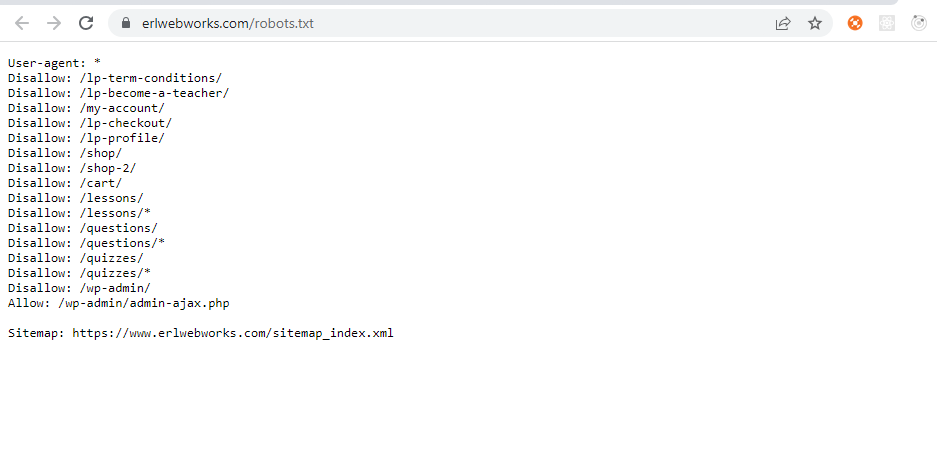
- XML sitemap: Sitemaps help search engines find all relevant pages on a website by providing structured information about each page.

- Site hierarchy organization: A clear, logical structure allows both users and search engine bots to navigate through the site with ease.
By addressing these key factors in crawlability and indexation optimization, websites can improve their overall performance in organic rankings. In addition to focusing on these aspects of technical SEO audits, one should also pay attention to other important areas like website speed optimization. This will ensure that both users’ needs are met effectively while meeting the demands of modern-day search engines.
Website Speed Optimization
Adequately addressing the need for speed in a digital landscape can significantly bolster a site’s performance, much like how a well-oiled machine operates seamlessly and efficiently. Website speed optimization is crucial not only for delivering an exceptional user experience but also for maintaining optimal search engine rankings. By ensuring mobile responsiveness, reducing server response time, implementing caching techniques, and utilizing image compression methods, website administrators can effectively enhance their site’s loading speed and overall functionality.
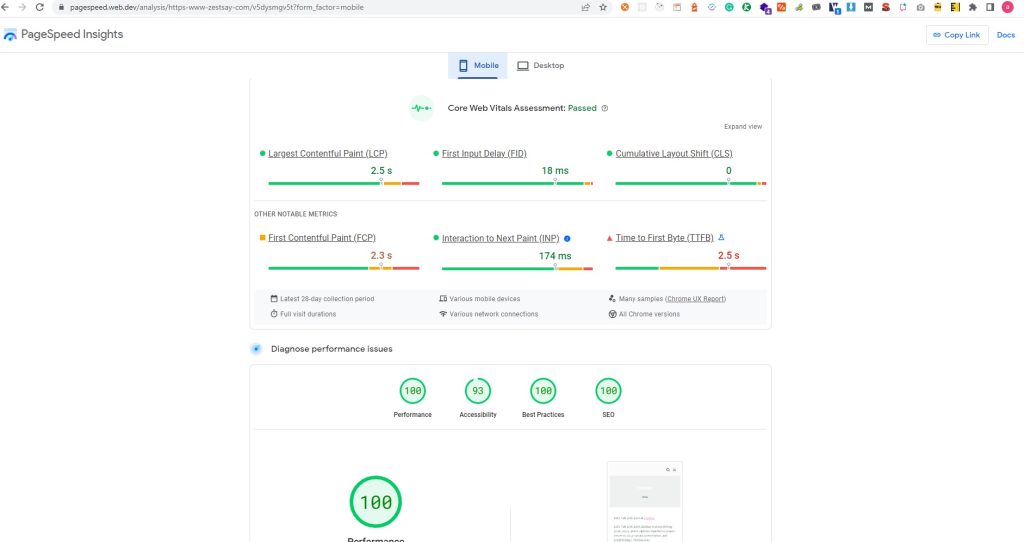
Taking these steps to optimize website speed will inevitably lead to better crawlability and indexability by search engines. This improved technical foundation sets the stage for successfully integrating structured data through schema markup implementation in the subsequent phase of your technical SEO audit strategy. As you progress through each aspect of your audit, remember that every improvement made contributes to the ultimate goal of maximizing your site’s visibility and performance in organic search results.
Structured Data Implementation: Schema Markup
Implementing structured data through schema markup is a crucial step in enhancing your site’s visibility, as it allows search engines to better understand and display your content in organic results. By optimizing structured data, you can take advantage of rich snippets utilization for improved click-through rates and user engagement. Furthermore, integrating schema markup best practices into your technical SEO audit can lead to SERP enhancement and semantic search optimization, ensuring that search engines accurately present the most relevant information from your website.
To effectively implement structured data on your website, it is essential to identify the key elements of your content that are most valuable to users and search engines alike. This process involves analyzing various on-page SEO factors such as title tags, meta descriptions, headers, and keyword usage. Additionally, understanding the different types of schema markup available – such as Organization, Product, or Event – can help you select the most appropriate form for each piece of content. As you progress with this approach towards structured data implementation and optimization, you will be well on your way to achieving an advanced level of mastery in technical SEO audits while delivering exceptional user experiences through enhanced visibility within organic search results.
On-Page SEO Factors
On-page SEO factors encompass a multitude of website components that contribute to its overall search engine performance. These factors include, but are not limited to, title tags and meta descriptions, header tags (H1, H2, H3), URL structure and optimization through addressing 404 pages and 301 redirects, keyword usage and density, optimizing multimedia assets such as videos and images, internal and external linking strategies, mobile optimization and page speed considerations, schema markup implementation, and identifying duplicate content. A thorough understanding of these on-page elements is crucial for ensuring a website’s success in achieving high search engine rankings while providing an optimal user experience.
Title tags and Meta descriptions

Meticulously optimizing title tags and meta descriptions is of paramount importance in enhancing a site’s visibility and ensuring its triumphant performance in search engine rankings. By employing strategies such as improving CTR, Meta Tags Optimization, SERP Analysis, Competitor Research, and Keyword Research Techniques, website administrators can create compelling titles and descriptions that accurately reflect the content of their pages while simultaneously enticing users to click through to their site.
- Improving CTR: Crafting enticing titles and meta descriptions can significantly increase a website’s click-through rate (CTR), leading to higher organic rankings.
- Meta Tags Optimization: Ensuring that title tags and meta descriptions are within recommended character limits while incorporating target keywords helps improve search engine rankings.
- SERP Analysis: Examining current search engine results pages (SERPs) for targeted keywords allows for the identification of patterns or trends that can be incorporated into optimization efforts.
- Competitor Research: Analyzing competitors’ titles and meta descriptions provides insights into their tactics, allowing for strategic adjustments in crafting one’s own metadata.
- Keyword Research Techniques: Utilizing various keyword research tools enables identifying high-priority terms to include within titles and meta descriptions.
In addition to focusing on title tags and meta descriptions, it is crucial not to overlook other elements contributing to a website’s overall SEO strategy. Headers (h1, h2, h3, etc.) play an instrumental role in conveying page structure information both for users navigating the content as well as indexing bots determining the relevance of each section.
Headers (H1, H2, H3, etc.)
Optimizing header tags, such as H1, H2, and H3, is essential in providing a well-structured content hierarchy that benefits both user navigation and search engine indexing processes. Website Header Optimization involves employing Header Tag Best Practices to ensure that the content on a webpage is organized logically and clearly for users while also signaling its importance to search engine crawlers. In addition to aiding in readability for human visitors, proper utilization of header tags establishes the flow of information and improves the overall relevancy of webpages during search engine indexing. Following Header Tag Optimization Tips can lead to better rankings in search results by effectively communicating the focus of each section or subsection on a page.
Header Tag SEO Techniques include using unique and relevant keywords within headers without overstuffing them with unnecessary terms. Each webpage should have only one H1 tag representing its main topic, with subsequent subheadings structured using H2s, H3s or lower-level headers as needed. It is important not to skip heading levels (e.g., jumping from an H1 directly to an H3) as this may confuse both users and search engines trying to discern the organization of your content. Properly utilizing these header tags will enhance user experience through clear navigation pathways while simultaneously improving your website’s visibility in organic search results. Ensuring that all aspects of your website are optimized – including title tags, meta descriptions, headers, URL structure – will create a strong foundation for success when it comes to navigating potential challenges related to 404 pages, 301 redirects, and further optimization strategies.
URL structure: 404 Pages, 301 Redirects, and Optimization
Navigating the labyrinth of URL structure, including addressing 404 pages and implementing 301 redirects, is crucial for ensuring seamless user experience and optimizing a site’s search engine performance. When analyzing a website’s technical SEO audit, it is essential to identify broken links, assess the usage of URL parameters, and implement canonical tags to resolve crawl errors effectively. The proper use of 301 redirects helps to maintain link equity between different versions of the same page or when migrating content from one domain to another. Moreover, identifying and fixing broken links (404 error pages) will improve user experience by preventing dead ends on a site.
Optimizing URL structures often involves shortening URLs while maintaining clarity and relevance. This can be achieved by creating descriptive slugs that accurately represent each page’s content while avoiding common issues such as excessively long URLs or using underscores instead of hyphens. Ensuring that appropriate canonical tags are implemented can help reduce confusion among search engines regarding which version of a page should be indexed. This comprehensive approach to optimizing URL structure not only benefits users but also enhances search engine performance. In line with this optimization process, it is essential to evaluate keyword usage and density throughout a site’s content for maximum impact in organic search results.
Keyword usage and Density
After addressing URL structure, 404 pages, and 301 redirects, the next key component to examine during a technical SEO audit is keyword usage and density. Ensuring that your website utilizes relevant keywords effectively can greatly impact its visibility on search engine results pages (SERPs). This not only involves conducting thorough keyword research but also optimizing your content through on-page analysis.
To optimize keyword usage and density, consider the following three points:
- Keyword research: Identify the most important and relevant keywords for your website’s niche by analyzing search volume, competition level, and user intent. Utilize tools like Semrush’s Keyword Magic Tool to find potential keywords that can drive organic traffic to your site.
- Content optimization: Once you have identified target keywords, incorporate them strategically throughout your website’s content without compromising readability or overusing them. Aim for a natural flow of language while maintaining an appropriate density that signals search engines about the main focus of each page.
- Competitor analysis: Analyze top-ranking competitors in SERP tracking to understand their approach towards keyword utilization and identify any gaps in their strategy where you could potentially outrank them.
By focusing on these aspects of keyword optimization during your technical SEO audit process, you will increase the chances of higher SERP rankings for targeted keywords. In addition to optimizing text-based content, it is also crucial to pay attention to other essential assets such as videos and images on your website – which we will discuss in detail in our subsequent section about optimizing these multimedia components.
Optimizing Website Assets: Videos and Images
Ensuring that your site’s multimedia components, such as videos and images, are properly optimized plays a crucial role in enhancing its overall performance and search engine visibility. Video optimization involves selecting the right format, ensuring proper video tagging for relevant keywords, optimizing video metadata (title, description), creating engaging thumbnail images for better click-through rates, and utilizing video sitemaps to improve discoverability by search engines. On the other hand, image compression is essential to reduce the file size of visual content without sacrificing quality so that pages load faster. Implementing an alt text strategy ensures that every image on your website has concise yet descriptive alternative text which aids visually impaired users in understanding the content while also serving as an additional opportunity to incorporate target keywords into a page.
Visual content SEO can be further enhanced through multimedia performance analysis; this involves regularly monitoring how your site’s visual assets are affecting user experience metrics like page load times and bounce rates. By identifying potential bottlenecks or areas for improvement within your multimedia elements, you can make informed decisions about where to prioritize optimizations moving forward. Additionally, it is important to consider how these multimedia components interact with other aspects of your website’s technical SEO audit process – particularly internal and external linking strategies – as they all contribute collectively towards improving search engine rankings and driving organic traffic growth.
Internal and external linking
Deliberate and diligent deployment of both internal and external linking strategies bolsters your site’s digital presence, fostering improved search engine rankings and augmented organic traffic. Internal linking involves connecting various pages within your website, which helps in link equity distribution, effectively guiding users through the site while simultaneously facilitating search engines to discover and index content. External linking refers to incorporating hyperlinks that point to other domains, demonstrating the credibility of your content and contributing positively towards search engine ranking algorithms. Both internal and external links benefit from anchor text optimization, ensuring that the clickable text is relevant to the linked content.
Additionally, one effective method to enhance user experience is by implementing breadcrumb navigation on your website. Breadcrumbs provide a clear path for users as they navigate through different sections of your site while also enhancing its overall architecture for search engines. As you optimize internal and external linking strategies within your technical SEO audit, it becomes crucial not to overlook other essential aspects such as mobile optimization and page speed – vital factors that significantly influence overall user experience as well as search engine rankings.
Mobile optimization and Page speed
Optimizing for mobile devices and prioritizing page speed are crucial components in enhancing user experience, fostering increased engagement, and ultimately achieving higher search engine rankings. With the majority of web traffic occurring on mobile devices, it is essential for websites to prioritize mobile responsiveness using tools such as Google’s PageSpeed Insights and Mobile-Friendly Test. These tools analyze a website’s performance on both desktop and mobile platforms, providing insights into areas requiring improvement. Furthermore, Core Web Vitals have become increasingly significant as they represent a set of metrics relating to loading performance, interactivity, and visual stability that directly impact user experience.
Implementing Accelerated Mobile Pages (AMP) can also contribute to improved site speed and overall mobile optimization. AMP is an open-source framework designed to create fast-loading web pages that maintain high-quality content with minimal latency. Emphasizing the importance of these factors will ensure a seamless browsing experience across various device types:
- Mobile responsiveness: Ensuring that your website adapts seamlessly to different screen sizes and device types.
- PageSpeed Insights: Utilize this tool provided by Google to analyze your website’s load times on desktop and mobile platforms.
- Core Web Vitals: Focus on improving these essential metrics related to loading performance, interactivity, and visual stability.
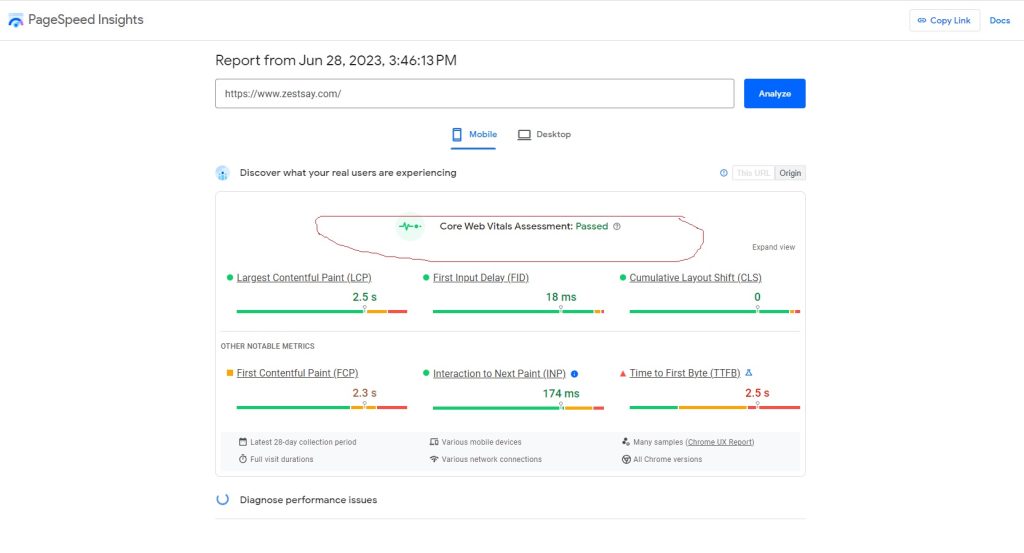
As we continue our journey towards technical SEO mastery, let us delve into another vital aspect – schema markup – which enables search engines to better understand the content presented on a webpage.
Schema markup
Embracing schema markup paves the way for search engines to effectively comprehend and interpret the content on a webpage, thus bolstering its visibility and relevance in online searches. By implementing this structured data method, webmasters enable search engine crawlers to better understand their website’s content, which consequently increases the likelihood of earning rich snippets in SERPs (Search Engine Results Pages). These enhanced visualizations not only foster user engagement but also improve click-through rates and overall site performance. To ensure optimal implementation of schema markup, webmasters should utilize tools such as Google’s Structured Data Testing Tool and stay abreast of evolving semantic web applications.
In addition to enhancing SERP appearances with rich snippets, incorporating schema markup can contribute to a website’s presence on the Google Knowledge Graph—a comprehensive database that seeks to map entities, properties, and relationships across various domains. By adopting schema markup language, websites can assert their authority within specific niches and attract more targeted traffic. As technical SEO audits delve into these advanced optimization techniques, it becomes crucial for webmasters to identify any inconsistencies or errors in their implementation of structured data elements. In doing so, they set the stage for continuous improvement in organic search rankings while seamlessly transitioning into addressing duplicate content issues that may hinder website performance further down the line.
Find Duplicate content
Identifying and addressing duplicate content is a critical step in enhancing a site’s search engine visibility, as it prevents potential penalties and ensures that each page contributes uniquely to the overall online presence. Duplicate content issues can arise from various sources, including internal duplication caused by poor site architecture or external duplication resulting from scrapers and syndicated content.
To effectively find and resolve duplicate content issues, consider employing the following strategies:
- Utilize plagiarism detection tools: Make use of reliable plagiarism detection tools such as Copyscape, Semrush Site Audit, or other alternatives to scan your website for any instances of copied content.
- Review your site’s architecture: Ensure that your website has a clear hierarchy with unique URLs for each page to avoid unintentional duplication.
- Implement canonical tags: Use canonical tags to indicate the preferred version of a page when multiple URLs contain similar content.
By diligently identifying plagiarism and implementing content duplication prevention measures, website owners can maintain their site’s credibility and optimize its performance in search engine rankings. In addition to focusing on these on-page elements, it is essential to explore off-page SEO factors that contribute significantly to an authoritative online presence.
Duplicatecontent is content that appears on more than one online location, meaning different websites. If you publish your own content in more than one place, you have duplicate content. If you copy someone else’s content onto your site or if they publish yours on their site, that’sduplicatecontent.https://digitalmarketinginstitute.com/blog/how-to-check-for-duplicate-content-overview-and-tools
Here are some excellent free tools you can use to check for duplicate content:
Duplichecker – This tool rapidly checks the originality of the content you’re planning to post on your site. Registered users can perform up to 50 searches per day.
Siteliner – This fantastic tool can check your entire site once a month for duplicate content. It also identifies broken links and highlights pages that are most prominent to search engines.
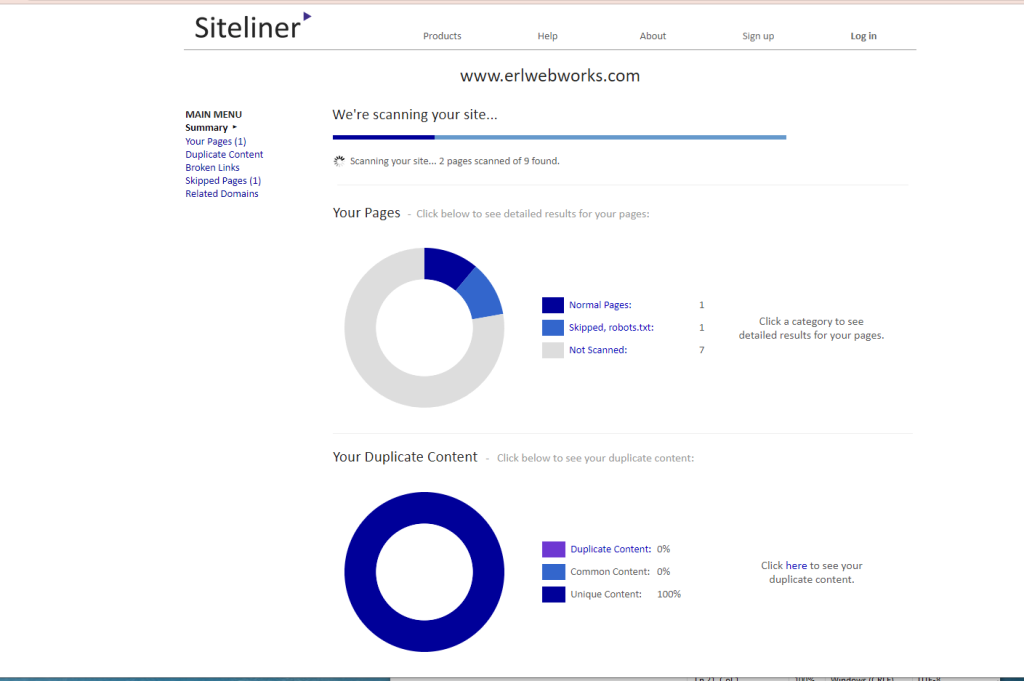
Off-Page SEO Factors
Off-page SEO factors encompass a range of external elements that contribute to a website’s search engines rankings, such as backlink analysis, social signals, and consistent NAP (Name, Address, Phone Number) information. A thorough examination of a website’s backlinks can reveal valuable insights into the quality and relevance of the linking sites, which directly impact search engine performance. Moreover, acknowledging the influence of social media on search engine algorithms and maintaining consistent NAP information across online platforms are crucial aspects in optimizing off-page SEO efforts for improved visibility and credibility.
Website Backlink Analysis
Analyzing a site’s backlink profile is crucial for understanding its authority, potential vulnerabilities, and opportunities for improvement in search engine rankings. Thorough backlink analysis can help identify gaps in the existing link-building strategy as well as uncover valuable insights into competitor success factors to adopting on one’s own site. Some key aspects of a comprehensive backlink analysis include competitor analysis, anchor text optimization, link-building strategies, broken link identification, and disavow tool usage.
- Competitor Analysis: Studying competitors’ backlink profiles can reveal successful strategies that can be replicated or adapted to improve one’s ranking.
- Anchor Text Optimization: Analyzing the distribution of anchor texts within a site’s backlinks helps ensure diversity and avoid over-optimization penalties from search engines.
- Link Building Strategies: Understanding various methods of acquiring high-quality links assists in developing an effective plan tailored to specific business goals.
- Broken Link Identification: Locating broken links within a website aids in rectifying them promptly to maintain optimal user experience and prevent loss of link equity.
- Disavow Tool Usage: Identifying harmful or low-quality links allows webmasters to request search engines like Google not consider those when evaluating their sites.
It is essential not to underestimate the power of social signals as they contribute significantly towards creating a well-rounded SEO strategy for website growth and improved rankings.
Ignoring Social Signals
In today’s digital landscape, overlooking the impact of social signals on a site’s overall search engine performance can be detrimental to achieving desired growth and rankings. The social media impact is now an essential aspect of SEO, as search engines take into consideration the popularity, engagement, and relevance of content shared across various platforms. To maximize the benefits of social media optimization, it is crucial to have a cohesive social media marketing strategy that aligns with your brand’s values and goals. By leveraging social media analytics tools and data-driven insights, businesses can make informed decisions about the type of content to create, when to post for maximum exposure, and how to engage their target audience effectively.
A well-rounded technical SEO audit should not ignore the importance of analyzing a website’s presence in different social channels. Assessing your website’s integration with popular platforms like Facebook, Twitter, Instagram, and LinkedIn among others will help identify any gaps or inconsistencies in branding efforts. Additionally, evaluating user-generated content such as reviews or comments will provide valuable feedback on customer satisfaction levels and industry reputation. Ensuring that all aspects of your online presence are optimized for peak performance will lead to better organic search visibility and higher conversion rates. Thus addressing inconsistent name-address-phone number (NAP) information across various online directories becomes an essential component in fine-tuning your overall digital marketing strategy.
Inconsistent NAP (Name, Address, Phone Number) Information
Moving on from the impact of social signals, another aspect that may affect a website’s performance in search engine rankings is inconsistent NAP (Name, Address, Phone Number) information. Inconsistencies and inaccuracies in this critical data can have detrimental consequences for businesses targeting local customers through Local SEO strategies. Ensuring citation consistency across various platforms and maintaining accurate location pages contribute to improving the website’s visibility in local search results.
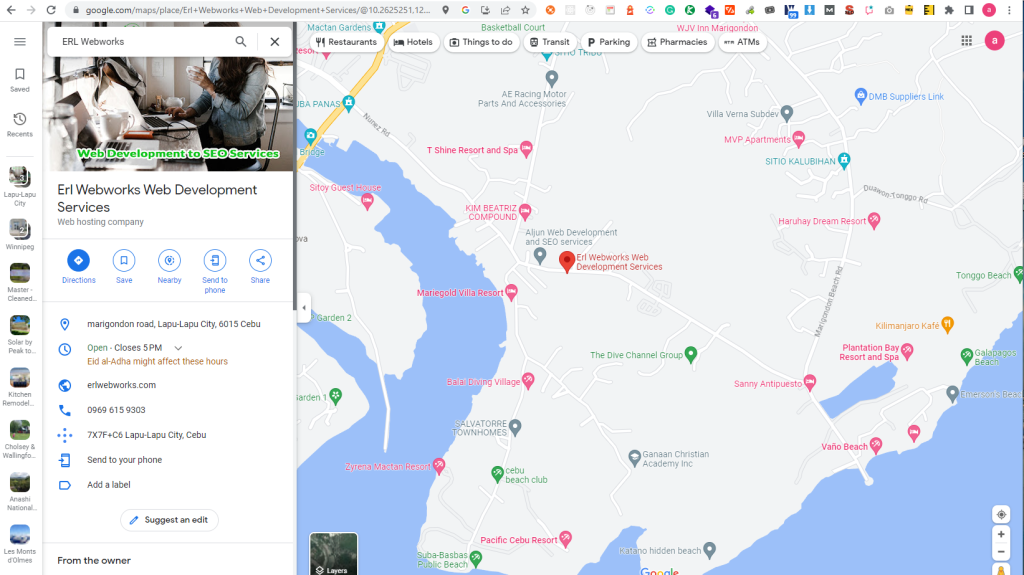
An essential component of Local SEO involves managing a business’s presence on Google My Business (GMB), which has a significant influence on how users perceive and interact with your brand online. To optimize your GMB listing:
Ensure NAP accuracy:
- Confirm that your business name, address, and phone number are consistent across all platforms.
- Update any discrepancies or outdated information immediately.
Optimize location pages:
- Create unique location pages for each physical store or service area.
- Include relevant keywords related to the specific location or region.
By paying attention to these details, you can enhance your website’s credibility and improve its ranking potential in local searches. As we continue our discussion on technical SEO audits, let us now explore other considerations vital for ensuring optimal website performance.
Performing a Technical SEO Audit: Other Considerations for Site Auditing and Search Engine Report Analysis
Other technical SEO considerations encompass a variety of factors that contribute to website optimization, including HTTPS implementation for secure browsing and trustworthiness, URL canonicalization to avoid duplicate content issues, image optimization to enhance page loading speed and user experience, site structure and navigation for improved ease of use by both users and search engine bots, and website security and monitoring to prevent cyber threats and ensure stable performance. These components play a vital role in enhancing overall website functionality while maintaining an effective online presence. A thorough understanding of these aspects is crucial for webmasters seeking to develop a comprehensive SEO strategy that caters to the ever-evolving digital landscape.
HTTPS Implementation
Ensuring proper HTTPS implementation is crucial for securing user data, building trust with visitors, and maintaining a positive search engine ranking. The process includes SSL implementation, HTTPS migration, ensuring the validity of SSL certificates, resolving mixed content errors, and selecting secure hosting options. To achieve these goals, it is important to consider the following aspects:
- SSL implementation: Acquiring and installing an appropriate SSL certificate for your website to encrypt communications between users and the server.
- HTTPS migration: Redirecting all HTTP URLs to their respective HTTPS counterparts using 301 redirects to maintain link equity.
- SSL certificate validity: Regularly check that your SSL certificates are up-to-date and have not expired.
Addressing these factors will result in a safer browsing experience for users while simultaneously improving the site’s standing with search engines. As part of an ongoing technical SEO audit process, it is essential also to focus on other aspects such as URL canonicalization. By identifying and addressing issues related to duplicate content or improper redirections early on in the auditing process, webmasters can ensure that their websites remain optimized for better visibility in search results. This practice paves the way towards understanding why URL canonicalization is important in optimizing web pages effectively.
Why URL Canonicalization is Important
Appropriately implementing URL canonicalization is vital for preventing duplicate content issues, streamlining site navigation, and enhancing search engine indexing efficiency, ultimately contributing to improved online visibility and user experience. The importance of canonical tags cannot be overstated, as they serve to indicate the preferred version of a page when multiple URLs contain similar or identical content. This not only mitigates the impact of duplicate content on SEO but also aids in correctly attributing link equity and other ranking signals to the intended page. Implementing hreflang tags is particularly beneficial for international websites, as it helps search engines understand which language versions should be served to users from different countries or regions.
In addition to using canonical tags and hreflang attributes, website administrators must also be aware of common canonicalization errors that can negatively affect SEO performance. These may include incorrect implementation of rel=”canonical” elements, self-referential canonicals on pages with no duplicates or alternates, or inconsistencies between canonical and alternate URLs in sitemap files. Rectifying these errors ensures effective canonicalization while maximizing the potential benefits for both search engine crawlers and users navigating the site. As part of a comprehensive technical SEO audit process, evaluating URL canonicalization strategies will help lay a solid foundation for future optimization efforts – including optimizing images for SEO – ensuring an enhanced overall digital presence.
Images Optimization for SEO
In technical SEO, URL canonicalization plays a crucial role in ensuring that search engines understand the preferred version of a webpage and index it accordingly. Another important aspect to consider for optimizing a website’s performance is image optimization. Properly optimized images not only improve user experience but also contribute to better search engine rankings.
Image optimization for SEO involves several key factors that can greatly impact site performance and search engine visibility:
- Image compression: Reducing the file size of images without compromising quality helps in faster page loading and improved user experience.
- Alt tags: Adding descriptive alt text to images not only aids visually impaired users but also provides search engines with valuable information about the content of an image.
- Image file names: Descriptive and keyword-rich file names help search engines understand what an image represents, ultimately contributing to better rankings.
- Image sitemaps: Submitting an image sitemap to Google Search Console ensures that all your website’s images are indexed properly by search engines.
In addition to optimizing images, it is essential to pay attention to other aspects of technical SEO such as site structure and navigation. The following section will delve deeper into these elements and their importance in maintaining a well-optimized website.
Site Structure and Navigation
A well-organized site structure and user-friendly navigation are crucial for both search engines and users to easily access and understand the content on a web platform. Website architecture should be designed with a clear hierarchy of pages grouped into relevant categories and subcategories. Navigation optimization involves setting up intuitive menus, and footer links and ensuring that no page is more than three clicks away from the homepage. A comprehensive site hierarchy review will help identify any inconsistencies or gaps in the organization of pages, while an internal linking analysis can reveal opportunities to improve link equity distribution across the website. Breadcrumb implementation is another important aspect of creating seamless navigation for users, as it provides contextual information about their current location within the site’s structure.
In addition to having a well-planned architecture, websites must also focus on security measures and ongoing monitoring to maintain optimal performance levels. Ensuring that the platform adheres to best practices in terms of HTTPS implementation, SSL certificates, and secure login procedures can greatly enhance user trust while reducing potential vulnerabilities. Regularly monitoring website performance through tools like Google Search Console or Semrush’s Site Audit can help identify technical issues that may impact search engine rankings or overall user experience. In the next section, we will delve deeper into website security and monitoring as essential components of an effective technical SEO audit strategy.
Website Security and Monitoring
Transitioning from site structure and navigation, another crucial aspect of a technical SEO audit is ensuring website security and monitoring. A secure website not only builds trust with users but also has a positive impact on search engine rankings. In this regard, there are several aspects to consider, such as malware detection, uptime monitoring, SSL certificate management, and website backup solutions.
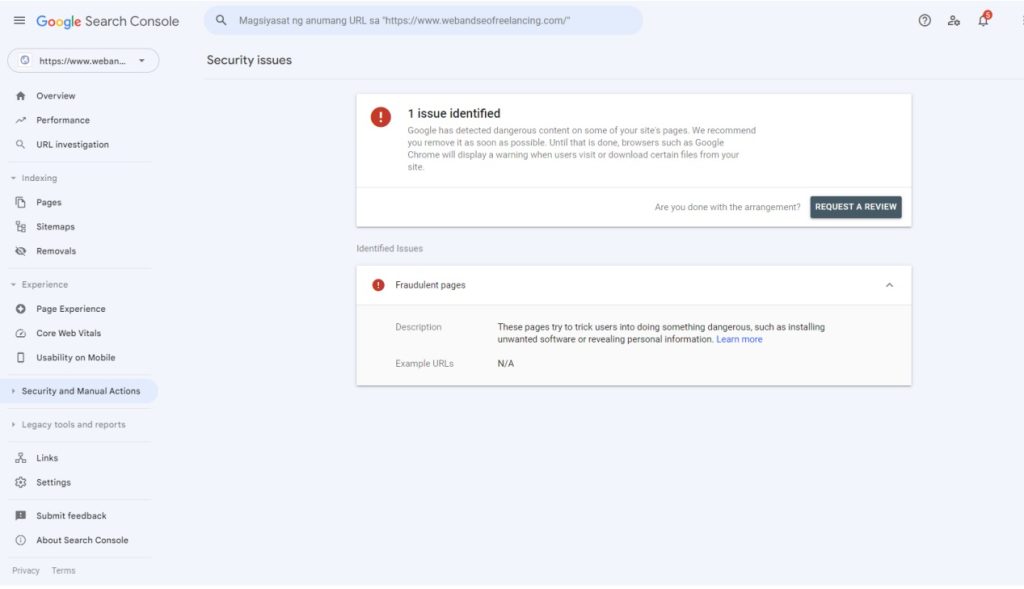
Website security plays a pivotal role in protecting sensitive user data and preventing unauthorized access. It is essential to deploy malware detection tools that can identify potential threats and vulnerabilities within the website’s code. Uptime monitoring helps ensure the continuous availability of the site by tracking its performance and alerting administrators about any possible downtime issues. SSL certificate management ensures that the communication between users’ browsers and the server remains encrypted, securing private information while transmitting over the internet. Additionally, implementing regular website backup solutions guarantees data recovery in case of an unexpected event or attack on your site’s infrastructure. By incorporating these measures into your technical SEO audit process, you create a safer online environment for both users and search engines alike—ultimately driving higher rankings for your webpages in SERPs.
Conclusion: Conducting a Technical SEO Audit to Enhance Your Site
In conclusion, mastering technical SEO audits is an art form, a dance between website owners and search engines. It’s similar to the delicate balance found in nature, and you can’t just ignore its importance when aiming for online prominence.
Just as clowns entertain the court with wit and satire, website owners must also take part in this amusing yet crucial task of regularly conducting technical SEO audits. By focusing on site architecture, internal linking, and mobile-friendliness, among other essential factors, they ensure their virtual kingdoms stay visible on the vast stage of search engine results pages.
Leveraging the potential of the internet to tap into new markets by employing the web development and SEO services approach is a game-changer. If you’re searching for services capable of producing remarkable global results through effective web development and SEO, then your search ends here! We firmly believe we’re your perfect choice.
Get in touch with us today to find out more.

